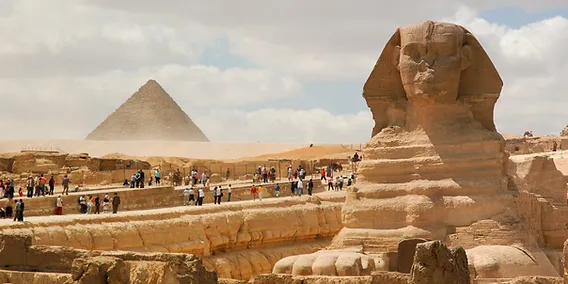moulddni0.com – Giza, a city on the west bank of the Nile River, is a testament to the grandeur of ancient Egypt. Known for its iconic pyramids and the Great Sphinx, Giza attracts millions of visitors each year. This article explores the historical significance, architectural marvels, and cultural impact of this ancient wonder.
The Historical Significance of Giza
The Birthplace of Pyramids
Giza is home to some of the most famous pyramids in the world, including the Great Pyramid of Giza, one of the Seven Wonders of the Ancient World. Built during the Fourth Dynasty of the Old Kingdom, these structures were constructed as tombs for pharaohs and are a testament to the ancient Egyptians’ architectural prowess and religious beliefs.
The Role of Giza in Ancient Egypt
As a necropolis, Giza played a crucial role in the religious and cultural life of ancient Egypt. It served as a burial ground for the elite and housed temples that were integral to the practice of the Egyptian religion. The site’s proximity to the ancient capital of Memphis made it a significant location for political and religious activities.
Architectural Marvels of Giza
The Great Pyramid of Khufu
The Great Pyramid, also known as the Pyramid of Khufu or Cheops, is the largest of the three pyramids at Giza. It originally stood at 146.6 meters (481 feet) and was the tallest man-made structure in the world for over 3,800 years. This pyramid is a masterpiece of engineering, with its precise alignment and massive limestone blocks.
The Sphinx: Guardian of the Necropolis
The Great Sphinx of Giza, with its lion’s body and human head, is one of the largest and oldest statues in the world. It is believed to represent Pharaoh Khafre and serves as a guardian figure for the Giza Plateau. The Sphinx continues to captivate historians and tourists alike with its enigmatic expression and monumental presence.
Cultural Impact and Legacy
Giza in Modern Times
Today, Giza is a vibrant city that seamlessly blends ancient history with modern life. The pyramids and the Sphinx are central to Egypt’s tourism industry and continue to inspire awe and wonder in people from all over the world.
Preservation and Challenges
Preserving the monuments of Giza is an ongoing challenge. Environmental factors, urbanization, and tourism pose threats to these ancient structures. Efforts by the Egyptian government and international organizations aim to protect and maintain the integrity of these historical sites for future generations.
Conclusion
Giza stands as a testament to the ingenuity and ambition of ancient Egypt. Its pyramids and the Great Sphinx are not only architectural marvels but also symbols of a civilization that has profoundly influenced human history. As we continue to study and preserve Giza, we gain a deeper understanding of our past and the incredible achievements of the ancient world.
